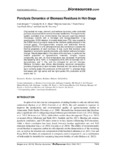Use este identificador para citar ou linkar para este item:
http://www.alice.cnptia.embrapa.br/alice/handle/doc/1026460Registro completo de metadados
| Campo DC | Valor | Idioma |
|---|---|---|
| dc.contributor.author | BERGIER, I. | pt_BR |
| dc.contributor.author | MAIA, C. M. B. F. | pt_BR |
| dc.contributor.author | GUIOTOKU, M. | pt_BR |
| dc.contributor.author | PAIVA, P. | pt_BR |
| dc.contributor.author | SILVA. A. P. | pt_BR |
| dc.contributor.author | NOVOTNY, E. H. | pt_BR |
| dc.date.accessioned | 2015-10-15T11:11:11Z | pt_BR |
| dc.date.available | 2015-10-15T11:11:11Z | pt_BR |
| dc.date.created | 2015-10-15 | pt_BR |
| dc.date.issued | 2015 | pt_BR |
| dc.identifier.citation | BioResources, Raleigh, v. 10, n. 4, p. 7604-7617, Nov. 2015. | pt_BR |
| dc.identifier.uri | http://www.alice.cnptia.embrapa.br/alice/handle/doc/1026460 | pt_BR |
| dc.description | Original data for mass, element, and methane dynamics under controleed pyrolysis presented for several biomass feedstocks. The experimental system consistend of an environmental (low-vacuum) scanning electron microscopy (ESEM) with a hot-stage and energy-dispersive X-ray spectroscopy (EDS) detector. A tunable diode laser (TDL) was coupled to the ESEM vacuum pump to measure the methane partial pressure in the exhaust gases. It was found that biochars were depleted or enriched in specific elements, with distinct methane formation change. Results depended on the nature of the biomass, in particular the relative proportion of lignocellulosic materials, complex organic compounds, and ash. As final temperature was increased , N generally decreased by 30 to 100%, C incresead by 20 to 50% for biomass rich in lignocellulosic, and P, Mg, and Ca increased for ash-rich biomass. Methane formation also allows discriminating structural composition, providing fingerprints of each biomass. Biomass with low ashes and hight lignin contents peaks CH4 production at 330 and 460ºC, whereas those biomasses with ligh ashes and low lignin peaks CH4 production at 330 and/or 400ºC. | pt_BR |
| dc.language.iso | eng | eng |
| dc.rights | openAccess | eng |
| dc.subject | Soil fertilizer | pt_BR |
| dc.subject | Fertilizer | pt_BR |
| dc.title | Pyrolysis dynamics of biomass residues in hot-stage. | pt_BR |
| dc.type | Artigo de periódico | pt_BR |
| dc.date.updated | 2017-07-25T11:11:11Z | pt_BR |
| dc.subject.thesagro | Fertilizante | pt_BR |
| dc.subject.thesagro | Biomassa | pt_BR |
| dc.subject.nalthesaurus | Agriculture | pt_BR |
| dc.subject.nalthesaurus | Biomass | pt_BR |
| dc.subject.nalthesaurus | Biochar | pt_BR |
| riaa.ainfo.id | 1026460 | pt_BR |
| riaa.ainfo.lastupdate | 2017-07-25 | pt_BR |
| dc.contributor.institution | IVAN BERGIER TAVARES DE LIMA, CPAP; CLAUDIA MARIA BRANCO DE F MAIA, CNPF; MARCELA GUIOTOKU, CNPF; PAULO MARCELO VERAS DE PAIVA, CPAF-AP; ANA PAULA SILVA, BOLSISTA EMBRAPA PANTANAL; ETELVINO HENRIQUE NOVOTNY, CNPS. | pt_BR |
| Aparece nas coleções: | Artigo em periódico indexado (CPAP)  | |
Arquivos associados a este item:
| Arquivo | Descrição | Tamanho | Formato | |
|---|---|---|---|---|
| PyrolysisDynamicsofbiomass.pdf | 1,47 MB | Adobe PDF |  Visualizar/Abrir |









